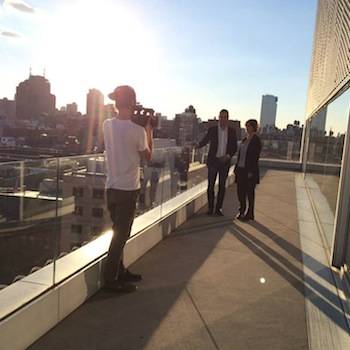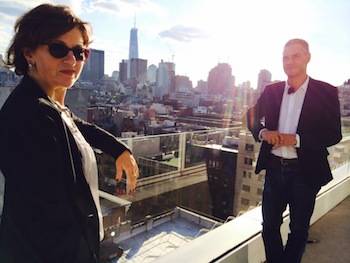A Citizen of Two Worlds - Interview with Massimiliano Gioni
You have devoted your life to contemporary art. Why were you first fascinated by this particular period in art?
The thing I always found most attractive in contemporary art was that it wasn’t taught at
school, so I had to explore it on my own and it was a field of knowledge and feeling that I felt I belonged to. I had to discover it on my own; I was my own teacher, away from organizations and hierarchies that were too closed and predefined.
Contemporary art is not deceptive nor is it stupid. It’s the place where you can allow yourself the joy of being free and different and maybe, why not, an idiot, in the sense that you’re not working within the frame of rationality. If we could all think this way I believe more people, and more young people, would be attracted to contemporary art.
From Milan to New York. How did it all start?
I arrived in New York in 1999 and between then and 2003 I was travelling back and forth to Italy. For a few years I didn’t really know where my home was. New York and Milan are indeed two different cities. Milan, “Europe’s Caffeine” as the futurist writer Marinetti defined it, is still one of the most lively and dynamic cities in Italy, and definitely the capital of contemporary art in terms of the number of artists and galleries. Compared to Milan, New York is of course a much faster and competitive city.
What I like is that, all considered, New York is also a small city. I know New York is not just Manhattan, but for someone like me, the part of New York relevant to my job is in Manhattan. There are countless contemporary art museums and galleries here, so it almost resembles one large town of exhibitions. In the span of a few hours, moving fast from downtown to the Metropolitan Museum, you can see so many.
You used to say that ‘curator’ is an odd word, that it sounds as if you cure people. What is an art curator?
Popular opinion believes that a curator’s job is mainly about flying all over the world. I’d like to point out that you have to spend as much time on books as you do on planes! Also, searching for and choosing artworks is of crucial importance, as well as the daily, almost physical contact with art and artists.
These are fundamental aspects of the “science” of being an art curator. Besides, the curator is the person who builds the story and creates the atmosphere. The great curator Harald Szeemann used to say that being a curator is like writing in the space, and I think this sums up our job: we create a sheet of music in which the artwork can exist and make a physical and intellectual impact on the public visiting the exhibition.
You have been with the New Museum for many years now. What does this museum mean to you?
You know, this building didn’t exist when I joined the New Museum. We inaugurated it a year later. It’s quite a unique museum. It’s 40 years old, almost as old as I am. It did play an important role in my life—I used to visit it when I first came to New York in 1999. It may be the most informal and hyperactive museum in New York, as well as the smallest, which gives us liveliness andflexibility. We are the only museum totally dedicated to contemporary art.
The New Museum and downtown are almost synonymous. Has it been difficult to operate in ‘ground zero’ all these years?
The New Museum has always been downtown but this building was still only a dream when the attack on the Twin Towers happened on 9/11. At the time, many institutions and people thought of abandoning this part of the city. But we didn’t. Now, seven years after the opening of this building, it has become a place that, thanks in part to its shape, is both a nerve center and a catalyst of this area. It’s like an antenna; it receives the signals of this city and broadcasts them to international space in a global dialogue. Downtown has been reborn, and we’re glad to have played a part in its rinascita.




































Comments
1